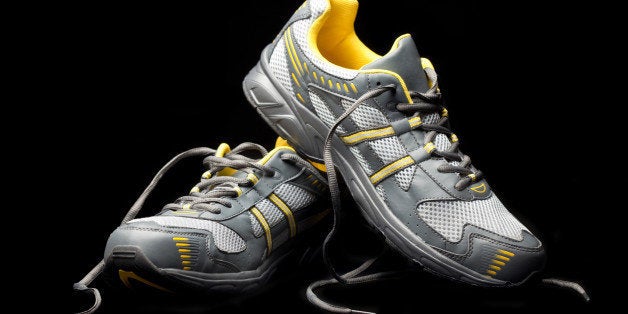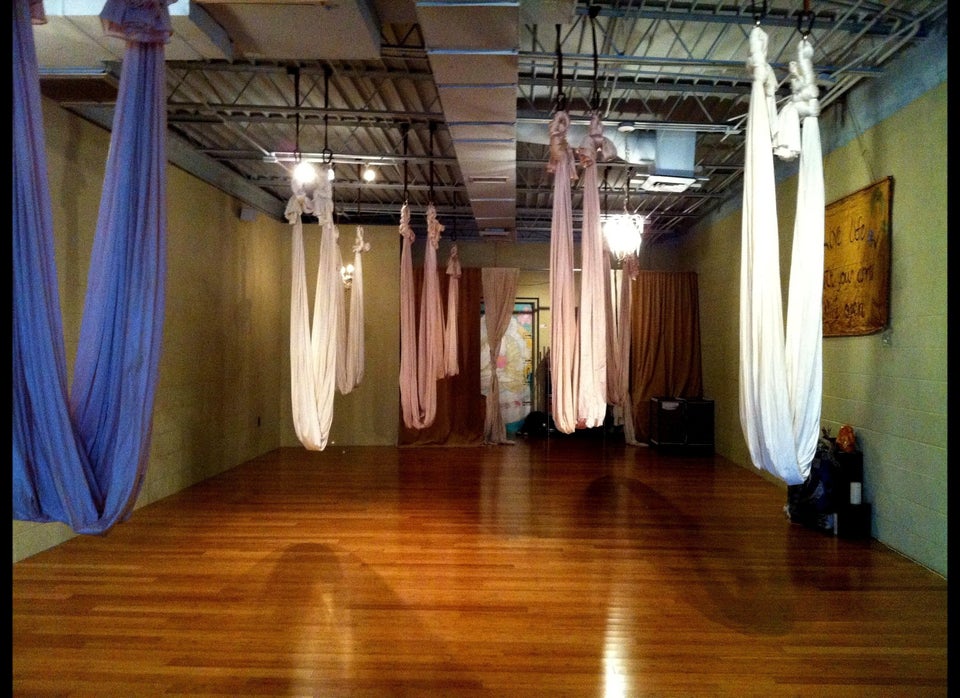
By Daniel Duane for Men's Journal
There's nothing like a new season to get us fired up for sports again -- bulking up for summer's Tough Mudder, or sneaking over to the track for speed work while dreaming of a personal best in that half-marathon this fall. But years of research and experience have led to a surprising new consensus among trainers, coaches and athletes, best summed up as "Not so fast." It turns out that one of the best things you can do for your next athletic ambition is to take some downtime and try something completely different -– mess around with new sports, keep workouts short and even skip the gym altogether when you're not in the mood. "Just exercise when and if you feel like it," says Joe Friel, author of The Triathlete's Training Bible. "And do whatever you want to do -– go hiking with the family, rollerblading, skiing. Days off are definitely encouraged."
Coaches have known this forever -– ordering track stars, quarterbacks, cyclists and basketball players to take a serious break after every season, to let the mind and body recover. More recently, exercise physiologists have identified potential markers of the cumulative fatigue caused by long-term training -– spikes in enzymes, for example, associated with inflammation and muscle damage. Jump back into working out too soon, before you shed all that built-up fatigue, and you virtually guarantee substandard performance later. That's why so many NBA players head to beaches like Bora Bora and Tenerife every summer, and it's also a big reason why Antonio Brown, a standout wide receiver for the Pittsburgh Steelers, dedicates his personal off-season to -– wait for it -– Pilates. But you don't have to be a pro to need a break. Everyone benefits from easing up now and then, setting aside our gym and sports routines precisely so that we can return stronger than ever.
The Truth About Recovery Is That You Never Really Recover
To understand how this works, it helps to know a core truth about all athletic training: We don't actually get fitter at the gym or on the road or in the pool. What we really do in hard workouts is apply a stimulus that elevates our heart rate, breaks down muscle fibers, causes the adrenal glands to secrete the stress hormones adrenaline and cortisol and generally tells our body that the status quo won't cut it anymore.
The "getting fitter" part -– the body's response to that stimulus -– comes afterward. While you eat and rest, the body gets to work repairing tissue damage, strengthening the heart and other muscles, restoring depleted fuel reserves and getting better at transporting oxygen throughout the body, making itself a little more efficient and stronger than before. Then we go out and do it again.
By training carefully and modestly -– stressing the body to stimulate change, and then letting it recover and adapt -– we stack up these little adaptations one on top of the other until, lo and behold, we find ourselves fit enough to run a marathon, lift a heavier weight, or play the best basketball of our adult lives. The problem is that we usually don't completely recover between workouts. Some of the fatigue stays with us, gradually accumulating during long periods of intense training dedicated to our favorite sport. Even as we get fitter and fitter, the mechanisms of recovery and adaptation begin faltering, putting us at risk for chronic exhaustion, difficulty sleeping and loss of motivation, evidenced in part by declining testosterone levels and increases in creatine kinase and urea.
"Your body has only a certain bank account of adaptive energy," says Alan Couzens, a cycling and triathlon coach with EnduranceCorner.com, based in Boulder, Colorado. "It will keep responding to training for only a certain period of time before that bank account goes into the red."
Getting Rid Of Every Last Bit Of Fatigue
Runners, cyclists and triathletes typically aim to reach peak fitness about two weeks before a big event. Most training plans ease up at about that point, heading into the so-called "taper" period, getting an athlete ready to race. Research has shown that cumulative fatigue fades quickly for those first two weeks, while fitness fades very little, meaning that you can show up on race day still in great shape but far more rested, allowing for optimal performance.
If your sport happens to be surfing or racquetball -– or even just weight training at the gym -– you probably don't have the luxury (or the burden, depending on your perspective) of structuring your training toward a few big events. But even if you take a rest day after every surf session, racquetball match or muscle group you train, you are still likely going to accumulate some fatigue.
When you need to shed 100 percent of this fatigue, two weeks of rest is usually not enough time to get you fully recovered. A 2005 study of Olympic swimmers, for example, published in the Journal of Strength and Conditioning Research, found fatigue markers still present in the rested athletes six months after the season's end. Push hard again before your body is ready and you'll carry some of that residual fatigue into the months ahead, raising the likelihood of breaking down early during your next big push.
The secret to optimal performance, therefore, is to take a break long enough to let all signs of fatigue disappear -– "It's essentially a recharge point for those adaptive mechanisms," says Couzens -– but not long enough to lose all of your current fitness. As for how long that break should be, it depends on how hard you've been working out, but one to two months is plenty for most nonprofessionals.
No matter your goals, it's best not to train in one discipline for too long without a break. Research published as far back as 1997, in The Journal of Sports Sciences, suggests that sport-specific training done more than five months before competition has minimal effect on performance. Plus, the body can handle only so much repeated stress -– training and adapting, while accumulating fatigue. If you're hoping to run a July marathon, for example, going out to crush anaerobic intervals six months before will only turn you into what Couzens calls a "February superstar," impressing the competition too early in the year. "Rarely are those guys around when it counts," says Couzens. Even if you play a single sport year-round -– basketball, squash, softball -– thinking in seasons is a good idea, with a four-to-five-month period of commitment followed by a month or two of going easy.
Make The Most Of Your Time Off
Taking a long break doesn't mean getting overly friendly with the couch -– you don't want to fall completely out of shape, and you certainly don't want to add pounds that will be hard to shed later. But steer clear of anything even remotely resembling a training plan, don't consider lung-busting interval workouts, and, most of all, stay away from your primary sport. Instead, look for sports that either build up some attribute useful in your main sport or keep you in similar shape but with a different mental focus.
If you're a cyclist or runner, for example, learn proper squat form and do a little winter strength training to fortify yourself against injury. If obstacle racing happens to be your thing, join a mixed-martial-arts gym for a couple of months, getting that same full-body experience but in a different format. And if you play basketball or tennis, dabble in mountain biking to keep the heart and lungs working, while giving the joints a break. Nick White, a senior coach with Carmichael Training Systems, considers self-deprivation to be the whole point: "Taking away that thing you love can really reinforce how much you love it, helping to bring back that motivation. Otherwise, training gets to feel like a job." And if your wife tries one more time to get you into her Pilates group, remember Antonio Brown and have at it.
More from Men's Journal:
7 Secrets to Living Longer
8 Ways to Save Time
How to Stop Procrastinating
